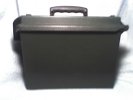|
Brief question with the reasoning below: has anyone looked into the setup on the routers to wire linking via the LAN connection so that the hops are minimize when the nodes are co-located? There is an issue that our group has encountered that most everyone seems to be missing, that is, using two different antennas, i.e., directional with an omni on one router. According to Cisco that will fail when there are multiple clients on one node configured that way. See this article for more information on using the diversity mode with two different antennas, http://www.hotarc.org/hsmm-mesh/articles. Secondly if some of us are going to use, the Ubiquiti Bullet M2 HP, then to have an omni and directional at the same sight there needs to be a way to interconnect them via a router such that they closer function as a single node. This may be a firmware question as well in setting up the nodes to talk some how. I found this information and talking with one of the group that did the right thing with single antennas, but it seems that they did not get the right stuff to connect the individual routers connected via the LAN. What they did wrong was put their directional antennas too close to each other which in their case it was the coupling that connected the nodes. The problem with this setup they had was a possible desensing of their radios due to the strong signals of their co-located antennas. The desensing does happen as I had tried an experiment in my house with five routers. All started at 1dBm output level and I had very good LQ, but when I raised one node to 19dBm out the LQ dropped by 20-30% on most of the rest that were close, i.e. raised the noise floor. Long story short has anyone looked into the setup on the routers to wire linking them so that the hops are minimize when the nodes are co-located?
|
